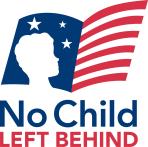
Empowering Parents With Information:
- Under "No Child Left Behind", states and school districts must provide "report cards" for parents, tailored information telling them about the quality of education at their child's school. Written in an easy-to-read format, these report cards ensure that parents and taxpayers know which schools are achieving and how.
- Included in the report cards are student achievement data broken out by race, ethnicity, gender, English language proficiency, disability status or financial disadvantage. This is to ensure that children once at risk of being left behind do not fall through the cracks.
- States and school districts must also provide parents and children in struggling schools timely notification of the public school choice and supplemental services options that may be available for their children.
Expanding Public School Choice:
- Under "No Child Left Behind", children in schools in need of improvement must be given the opportunity to transfer to other public schools in their district, including public charter schools. School districts must tell parents about this option, as well as pay for transportation to the other schools.
- During the 2003-04 school year approximately 38,000 students took advantage of this option.
Supplemental Educational Services:
- Under "No Child Left Behind", children from low-income families who attend schools that have been identified as "in need of improvement" for two or more consecutive years are given the opportunity to receive free supplemental servicessuch as tutoring and other academic services provided outside the regular school dayfrom a variety of State-approved providers. Parents have the opportunity to choose the provider that best meets the needs of their children.
- Many types of organizations are eligible to be supplemental service providers, including faith-based organizations, for-profit companies, school districts, private schools, charter schools and other community groups. As of February 2006, more than 3,116 providers have been approved by States to offer supplemental services.
- Districts must set aside an amount equal to 20 percent of their Title I allocation for supplemental services and transportation for public school choice.
- During the 2003-04 school year approximately 233,000 students took advantage of the supplemental services option.

Expanding Options for Parents and Children
"No Child Left Behind" significantly expands educational choice for parents and children. In many school districts, however, there are too few alternatives for parents seeking quality educational options. Since President Bush took office, more than $2.2 billion has been provided for programs and initiatives to help ensure that parents have more meaningful choices when it comes to their children's education. The President's 2007 budget request reflects his commitment to expanding options for parents by including $484 million for programs such as:
Charter Schools
- The President's 2007 budget provides $214.8 million to continue the Charter School Program, including $200 million to help create new charter schools and an additional $14.8 million in matching funds to States that offer per-pupil financial assistance to charter schools to obtain facilities. Since 2001, more than $1.2 billion has been appropriated for the Charter Schools Program. In 2006, more than a million students in 40 states and the District of Columbia are being educated in 3,400 charter schools.
- NCLB specifically includes public charter schools as an option for families deciding to transfer their children from a school identified for improvement.
Credit Enhancement for Charter School Facilities Program
- This program supports competitive grants to public and nonprofit entities to help charter schools finance their facilities through such means as providing loan guarantees, insuring debt and other activities to encourage private lending. The President's 2007 budget provides $36.6 million for this program, which builds on the more than $160 million that has been appropriated since 2001. In 2005, more than 48,000 students were benefiting from this program.
Magnet Schools
- Magnet schools provide a distinctive educational program for diverse student populations. The President has requested $107.8 million for this program in his 2007 budget. Of this amount, approximately $100 million would be used to make new grants that would enable school districts to create and open new magnet schools. Since 2001, close to $657 million has been appropriated to support magnet school programs across the country. In 2006, 52 school districts, 218 schools, and approximately 150,000 students are benefiting from this program.

Voluntary Public School Choice Program
- The President's 2007 budget provides $26.3 million for this program, which offers grants to states and school districts to establish or expand innovative public school choice programs. Viable public school choices for NCLB transfers include magnet, charter, virtual, alternative, specialized, and thematic school programs. Created in 2002, over $130 million in grants have since been awarded. In 2005, nearly 850,000 students were benefiting from this program.
D.C. School Choice Initiative
- Begun in 2004, this program provides low-income parents in our nation's capital more options for obtaining a quality education. Over 1,000 students attended private schools on Opportunity Scholarships for the 2004-05 school year, the program's first year in implementation, and 1,086 new students were recently awarded scholarships for the 2005-06 school year. Since 2004, over $40 million has been appropriated for D.C. Choice, and the President has requested an additional $15 million for the program in his 2007 budget.
America's Opportunity Scholarships For Kids
- To help children enrolled in schools that have not made adequate yearly progress for at least six years, or that are being restructured, President Bush has proposed America's Opportunity Scholarships for Kids. These scholarships, funded with $100 million in the President's FY 2007 budget, would provide parents with scholarships worth up to $4,000 to transfer and transport their child to a private school, or up to $3,000 to obtain intensive supplemental services, such as after-school and summer-school instruction.
Other Related Articles:
- Choosing a School: First Steps
- Choosing a School: Explore Your Options
- Choosing a School: How to Evaluate
- Preventing Bullying at School
- Dept. of Education Guide to Choosing a School
- Parents Page at Dept of Education
Source: U.S. Department of Education
 Print
Print Email
Email







